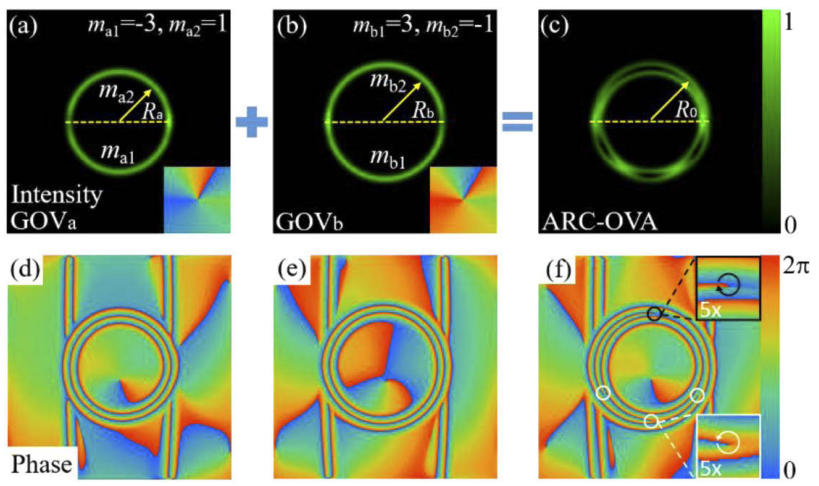Because the optical vortex (OV) has the ability to carry an orbital angular momentum, it has been widely studied in many fields such as micro-particle manipulation, optical communications, measurements and imaging that contribution to the wide interests of optical vortex array (OVA).
Recent studies proposed that by using elliptic annular OVA and OVAs arranged along an arbitrary curvilinear path, the limitation of mode modulation of traditional OVAs can de addressed.
Still, the sign and distribution of the OVs in the connected OVAs are difficult to modulate. Are there any methods to overcome this defect?
A research team from Xi'an Institute of Optics and Precision Mechanics (XIOPM) of the Chinese Academy of Sciences (CAS) proposed a novel OVA called anomalous ring-connected optical vortex array (ARC-OVA) which has an anomalous OVs distribution while the number and sign of the OVs can be easily modulated. The results were published in Optics Express.
 Schematic diagram of the OVAs.(Image by XIOPM)
Schematic diagram of the OVAs.(Image by XIOPM)
The expected ARC-OVAs are demonstrated theoretically and experimentally. The ARC-OVA is generated via superposition of two concentric grafted OVs (GOVs) and the complex amplitude of an ARC-OVA can be expressed as the sum complex amplitude of inner and outer GOVs, which is confirmed by the experimental results.
Results show that the positive and negative OVs simultaneously appear in the same intensity ring. Additionally, the size of the dark core occupied by the OV can be modulated, and the specific dark core is shared by a pair of plus–minus OVs.
More importantly, the signs and distribution of the OVs can be individually modulated compared with conventional OVAs, while the number of OVs remains unchanged.
The proposed ARC-OVA will be a motivation for new applications in optical trapping and optical measurement.
Download: